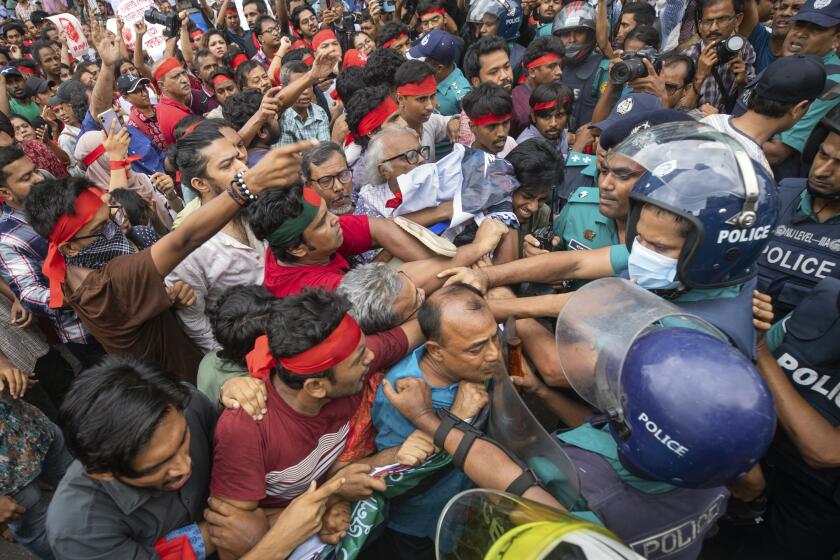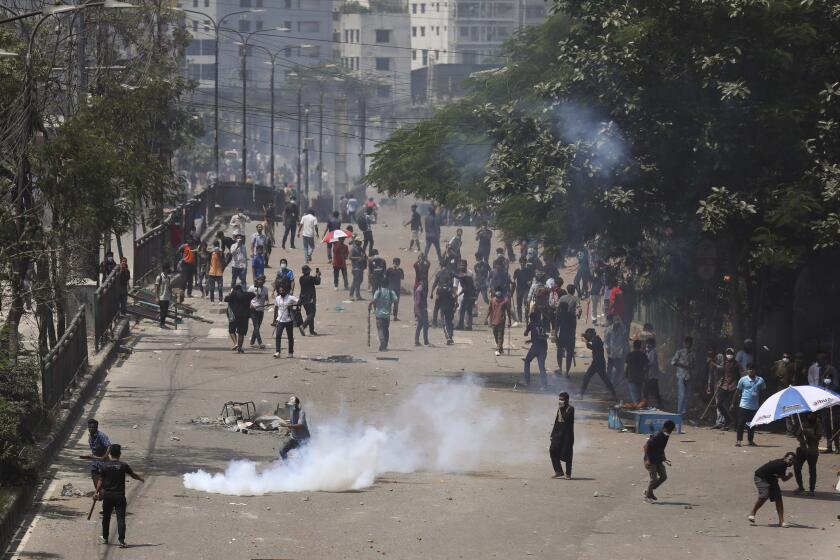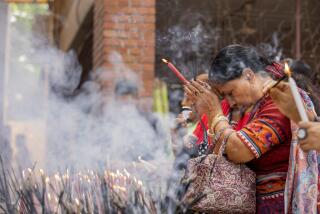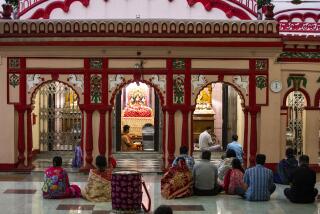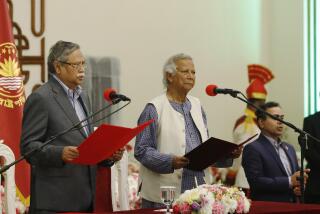Anti-government protests leave nearly 100 reported dead, hundreds more injured in Bangladesh
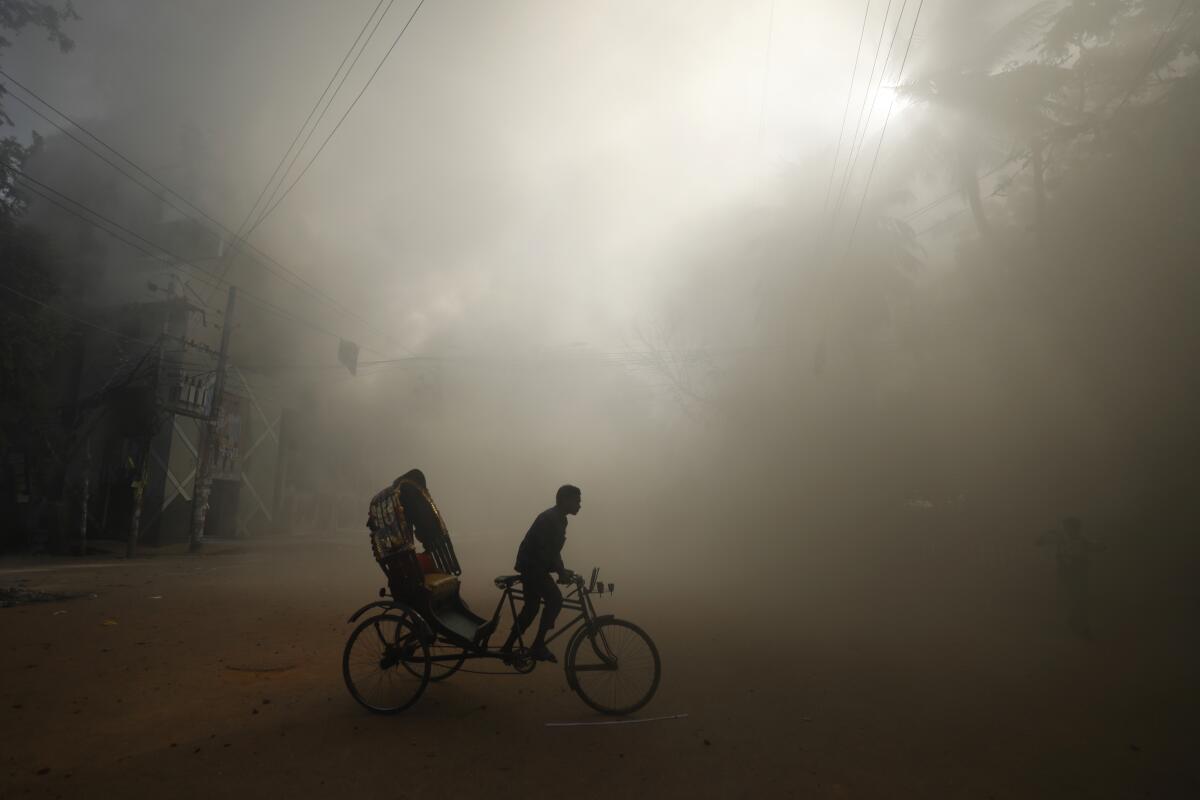
DHAKA, Bangladesh — Nearly 100 people were reported killed and hundreds injured Sunday as renewed protests swept across Bangladesh, with demonstrators calling for the government to resign and the prime minister accusing them of “sabotage” and cutting off mobile internet in a bid to quell the unrest.
The country’s leading Bengali-language daily, Prothom Alo, said at least 95 people, including at least 14 police officers, died in Sunday’s violence. Channel 24 reported at least 85 deaths.
The military announced that a new curfew, including in the capital, Dhaka, and other divisional and district headquarters, was in effect Sunday evening for an indefinite period.
Demonstrators are demanding Prime Minister Sheikh Hasina’s resignation following protests last month that began with students calling for an end to a quota system for government jobs. Those demonstrations escalated into violence that left more than 200 dead.
As the violence raged, the prime minister said those who were engaging in destruction in the name of protests were no longer students, but criminals, and said the people should deal with them with iron hands.
The ruling Awami League party said the demand for Hasina’s resignation shows protests have been taken over by the main opposition Bangladesh Nationalist Party and the now-banned Jamaat-e-Islami party.
Bangladesh is observing a day of mourning in memory of more than 200 people killed in recent weeks during student protests.
Also Sunday, the government announced a holiday from Monday to Wednesday. Courts will remain closed for an indefinite period. Mobile internet service was off Sunday, and Facebook and messaging apps including WhatsApp were inaccessible even on broadband internet.
Junior Minister for Information and Broadcasting Mohammad Ali Arafat said Sunday that mobile internet and messaging services were off to help prevent violence.
At least 11,000 people have been reported arrested in recent weeks. Authorities closed schools and universities across the country, blocked internet access and at one point imposed a shoot-on-sight curfew.
The protests posed the most serious challenge to Bangladesh’s government since Prime Minister Sheikh Hasina won a fourth consecutive term in January.
Protesters called for a “noncooperation” effort, urging people not to pay taxes and utility bills and not show up for work on Sunday, a working day in Bangladesh. Offices, banks and factories opened, but commuters in Dhaka and other cities faced challenges getting to work.
The demonstrators attacked Bangabandhu Sheikh Mujib Medical University, a major public hospital in Dhaka’s Shahbagh area, burning several vehicles. Video showed protesters vandalizing a prison van at Dhaka’s chief metropolitan magistrate’s court.
Other videos showed police opening fire on the crowds with bullets, rubber bullets and tear gas. The protesters set fire to vehicles and the ruling party’s offices. Some carried sharp weapons and sticks, according to TV video.
In Dhaka’s Uttara neighborhood, police fired tear gas to disperse hundreds of people who blocked a major highway. Protesters attacked homes and vandalized a community welfare office in the area, where hundreds of ruling party activists took up positions. Some crude bombs were detonated and gunshots were heard, witnesses said.
At least 18 people were killed in the northwestern district of Sirajganj. That figure included 13 police officers who died after a police station was attacked by protesters, according to police headquarters in Dhaka. Another officer was killed in the eastern district of Cumilla, police said.
Five people died in the Feni district in southeast Bangladesh as Hasina’s supporters clashed with protesters. Asif Iqbal, a resident medical officer at a state-run hospital in Feni, told reporters that they had five bodies at the hospital, all of them shot. It was not clear if they were protesters or ruling party activists.
In Munshiganj district near Dhaka, hospital official Abu Hena said four people were declared dead after being rushed to a hospital.
Jamuna TV station reported violent clashes between protesters and police and ruling party activists in more than a dozen districts.
The protests began last month as students demanded an end to a quota system that reserved 30% of government jobs for the families of veterans who fought in Bangladesh’s war of independence against Pakistan in 1971.
As violence crested, the country’s Supreme Court scaled back the quota system to 5% of jobs, with 3% for relatives of veterans, but protests have continued demanding accountability for violence the demonstrators blame on the government’s use of excessive force.
The system also sets aside jobs for members of ethnic minorities, and disabled and transgender people, whose quotas were cut from a collective 26% to 2% in the ruling.
Hasina’s administration has blamed the main opposition Bangladesh Nationalist Party and the banned right-wing Jamaat-e-Islami party and their student groups for instigating violence.
Mirza Fakhrul Islam Alamgir, secretary-general of the main opposition party, repeated a call for the government to step down to stop the chaos.
Hasina offered to talk with student leaders on Saturday, but a coordinator instead reiterated a demand for her resignation.
The protests have become a major challenge for Hasina, who has ruled the country for more than 15 years, returning to power for a fourth consecutive term in January in an election that was boycotted by her main opponents.
Alam writes for the Associated Press.
More to Read
Sign up for Essential California
The most important California stories and recommendations in your inbox every morning.
You may occasionally receive promotional content from the Los Angeles Times.
